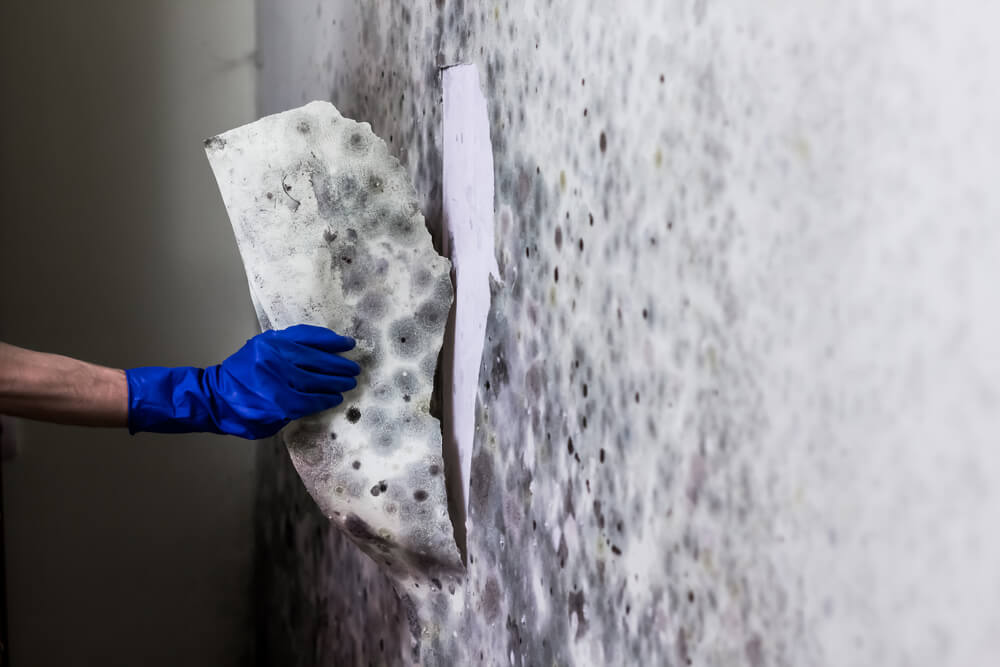Your Ultimate Overview to Blog Post Mold And Mildew Removal Strategies
Browsing the world of post-mold removal methods is a precise process that demands focus to information and a thorough understanding of the intricacies entailed. In the after-effects of mold and mildew infestation, knowing exactly how to effectively eradicate the mold and stop its reoccurrence is extremely important for preserving a healthy interior setting. From selecting the appropriate cleansing and decontaminating techniques to applying techniques for lasting mold and mildew avoidance, each action in the remediation trip plays an essential duty in guaranteeing a successful outcome. As we get started on this expedition of post-mold removal techniques, we will certainly uncover the key methods and ideal practices that can aid you restore your area to its pre-mold problem and safeguard it against future mold threats.
Recognizing Post-Mold Removal Process
After completing the mold and mildew remediation process, it is vital to recognize the post-mold removal strategies that are required to make certain a extensive and reliable cleaning. As soon as the mold has actually been removed, the next step includes cleansing and sanitizing the affected areas to avoid any kind of regrowth of mold and mildew.
Furthermore, conducting a final inspection post-remediation is essential to make sure that all mold has been successfully eradicated. If the assessment discloses any lingering mold and mildew, additional remediation may be essential.
Reliable Cleansing and Sanitizing Techniques

Stopping Future Mold Development

Value of Appropriate Air Flow
Proper ventilation plays a vital function in protecting against moisture build-up, an essential aspect in mold and mildew growth within interior settings. Reliable air flow systems help get rid of excess humidity from the air, lowering the chances of mold spores finding the dampness they need to spread out and sprout. Without sufficient air flow, interior spaces can come to be a breeding place for mold, resulting in possible health and wellness dangers and architectural damages.
By guaranteeing correct air flow, ventilation systems can likewise assist in drying moist areas quicker after water damages or flooding incidents, further discouraging mold development. what to do after mold remediation. In areas like restrooms, attic rooms, cellars, and kitchen areas where wetness degrees tend to be greater, setting up and keeping reliable air flow systems is crucial in protecting against mold invasions

Monitoring and Maintenance Tips
Provided the essential function that proper ventilation plays in preventing mold growth, it is crucial to develop reliable tracking and upkeep about his tips to make certain the continued capability of ventilation systems. Routine examinations of air flow systems must be carried out to check for any kind of signs of blockages, leakages, or breakdowns that might impede proper airflow. Surveillance humidity degrees within the residential or commercial property is additionally crucial, as high moisture can add to mold development. Setting up a hygrometer can help track moisture levels and alert property owners to any spikes that might need interest. Furthermore, making certain that air filters are routinely cleansed or changed is necessary for maintaining the efficiency of the air flow system. Applying a schedule for routine maintenance tasks, such as air duct cleaning and a/c system assessments, can aid stop issues prior to they rise. By staying attentive and proactive to the condition of air flow systems, homeowner can successfully mitigate the risk of mold regrowth and maintain a healthy and balanced interior atmosphere.
Conclusion
To conclude, post-mold removal techniques are necessary for ensuring a clean and secure environment. Recognizing the procedure, executing reliable cleansing and disinfecting approaches, stopping future mold growth, keeping proper ventilation, and regular tracking are all vital action in the remediation process. By complying with these standards, you can successfully get rid of mold and avoid its return, promoting a healthy living or working room for all residents.
In the after-effects of mold and mildew invasion, knowing how to efficiently eliminate the mold and mildew and prevent its reoccurrence is paramount for maintaining a healthy and balanced interior setting. When the mold and mildew has been gotten rid of, the following action entails cleansing and decontaminating the influenced locations to prevent any regrowth of mold - Post Remediation Inspection near me. After eliminating visible mold development, it is vital to cleanse all surfaces in the afflicted location visit homepage to get rid of any kind of remaining mold spores. To further improve mold avoidance steps, it is vital to resolve underlying issues that initially led to mold and mildew advancement.Offered the important function that proper air flow plays in stopping mold development, it is crucial to establish effective tracking and maintenance pointers to make certain the continued functionality of ventilation systems